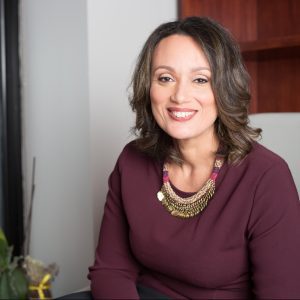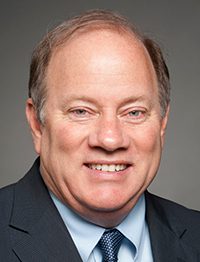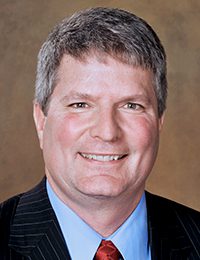
K-12 Education
The Other Detroit Comeback Story
A Cross-Section of Education Advocates Set Aside Their Differences to Create a Blueprint for Reshaping the City’s Education Landscape. It Almost Happened.
Kids bundled against a wind chill that made the trek even more frigid, they walked to the bus stop and waited. And waited. What time was the bus expected to arrive, Rakolta asked, shivering. 6:50. So why get to the stop half an hour early? Because buses are few and schedules erratic; if the 6:50 came early and they missed it there wouldn’t be another for two hours.
The CEO of a privately held company that builds auto assembly plants all over the world, Rakolta’s sideline avocation is race relations. He’d been part of two decades of purposeful efforts to understand his own white privilege and to build relationships between black and white Detroiters. He’s both a conservative and a booster of a black, Democratic city.
A major fundraiser for the presidential campaigns of Mitt Romney in 2012 and Marco Rubio in 2015, Rakolta was riding the bus with the Robinsons because a few months earlier a friend had asked him to join an effort to create some stability in the city’s crumbling school system, often described as the worst in the nation.
“I’m a contractor,” he protested when Alice Thompson, head of the nonprofit Black Family Development, called. “I’ve been involved in race relations but I know nothing about education. She said, ‘We need your voice in Lansing.’”
Under state control for most of two decades, Detroit Public Schools was hurtling toward bankruptcy. By most indicators, the city’s traditional and charter schools were the worst performing in the country. Republican Gov. Rick Snyder was entertaining proposals to stanch the financial hemorrhaging and bring accountability to the mostly dismal charter school sector.
A Who’s Who of Detroit education-sector players had come together to craft a plan, but if they were going to sell it—and if it was to get enough buy-in all around to work–they needed conservative power-brokers on board.
Rakolta thought he understood all of this. But then he made the trip to school with the Robinsons. While Mrs. Robinson settled her kids on the bus, a passenger helped Rakolta figure out how to pay for a transfer ticket. When he sat down, it was for what a shockingly short ride.
“We go three miles,” he recalls. “We get off in a part of town with no streetlights. It’s dark as hell. Mrs. Robinson says we’ve got to get to the next stop, which is three blocks away.”
They waited again. “So I get my iPhone out. I said, ‘This is ridiculous. I’m getting an Uber.’ I open the app and the nearest one is 46 minutes away.”
He pressed Robinson. School was one more mile away, why not just walk? Her reply: “Because of the dogs”—home security in Detroit’s most crime-riddled neighborhoods.
“So we rode the bus a mile and then we walked the son a few blocks one way and the daughter eight blocks the other way,” says Rakolta. “It took an hour and a half and she would have to repeat it in the afternoon.”
According to the most recent National Assessment of Educational Progress — often referred to as the nation’s report card — only 4 percent of Detroit eighth graders can do math at grade level, the lowest rate in the nation. Just seven percent are reading on target.
The city’s traditional district-run schools have long been in decline and the public charter schools that began opening 20 years ago have performed only marginally better. Despite this dismal track record, the for-profit companies that run most charter schools continue to open new ones.
Further complicating things, there are only enough students to fill 60 percent of classroom seats. The half-empty classrooms make it hard for schools to bring in enough tuition dollars to meet costs, so schools often close with no notice. Over the last six years, 80 percent of schools in the city have either opened or closed—or both.
Many neighborhoods are school-free zones. No one has the authority to make new schools open near families or to prevent the closure of schools that would leave a community with no practical alternative.
Buses are few and schedules erratic.
Mrs. Robinson’s hours-long commute would surprise few Detroit parents. But it came as a shock to Rakolta, who threw himself and his considerable social and political capital into an unprecedented, bipartisan effort to reclaim Detroit’s schools.
Throughout the city education advocates who typically can’t agree whether it’s night or day were feeling the same sense of urgency. Unless they set aside adult interests and ideologies, the cross-section of people who loved the city and its children wouldn’t have a school system to argue about. It was time for Detroiters to come up with a blueprint for reshaping the city’s education landscape.
It almost happened.
* * *
When Mike Duggan was running for mayor of Detroit in 2013, Dan Varner made a point of turning up at his campaign events and asking questions about education. Detroit was enjoying a long-overdue economic boom, but the city’s recovery wouldn’t be sustainable unless there were schools people wanted send their kids to. Yet it was clear the schools were in a death spiral that wouldn’t be interrupted without some kind of high-level intervention.
On the stump Duggan said all the right things, but it wasn’t clear to Varner, at the time executive director of the school-quality nonprofit Excellent Schools Detroit, what the candidate meant when he said he would be a good partner to the schools.
After the mayor was sworn in, Varner sent him a letter. It went unanswered, so he asked for a meeting with a couple of Duggan’s deputies in which, he says, “it became clear they weren’t passing it along.”
So when Varner saw lunch with the mayor on the silent auction list at a function, he bid — $400, then $450 — until he won it. When the two were finally face-to-face in the summer of 2014, Varner slid the letter across the table.
“He spent about 10 minutes reading,” Varner recalls. “And then he looked up and started extolling the virtues of Tonya Allen.”
Allen is the president and CEO of the Skillman Foundation, the philanthropy most invested in Detroit’s children. She had begun calling community members to invite them to join an education reform effort, the Coalition for the Future of Detroit’s Schoolchildren.
It was clear dramatic change was needed, but who would oversee it? Neither continued state management nor a return to the corrupt school boards of the past was palatable to members of either political party. A plan that came with buy-in from the mayor —popular enough to win the primary election as a write-in — would send a signal to the governor that Detroit was ready to dig in.
“People on the other side of the aisle listen to him,” David Hecker, president of the Michigan Federation of Teachers, says of Duggan, who is white. “Partially for horrible reasons — that he doesn’t ‘look like’ Detroit — and partially because he is an impressive guy.”
Duggan, however, was thought to be wary. He had asked his staff to look into what had been tried in the past, an exercise that unearthed “binders and binders” of moldering assessments of the schools’ failings. Each was the brainchild of its respective, particular constituency. Each marquee turnaround plan had fizzled.
Known for spending his political capital carefully, Duggan did not want to run the schools, the route taken—to mixed effect–by mayors facing education crises in Chicago, Philadelphia, Washington, D.C. and a number of other large cities.
“He’s a political creature,” observes Varner. “I think he knew if he was going to do something he shouldn’t do it alone.”
In the Coalition for the Future of Detroit’s Schoolchildren, Duggan got an unheard of collection of backers: Titans of industry and bus-riding parents; teacher union leaders and backers of the city’s charter schools; ministers and politicians.
Hecker recalls a moment in an early meeting where Rakolta half-joked that he was the only Republican in the room. The mostly Democratic Detroiters huddled briefly before asking the businessman to nominate some of his partisans.
“We said, ‘You’re right,’” Hecker says. “It needs a broader representation than just a token Republican. Democrats don’t control anything in Lansing. If we didn’t have representation on the other side of the aisle, we’re dead in the water.”
Invitations were extended to the sons of two late, beloved Michigan Republican governors Bill Milliken and George Romney, also father of Mitt.
It was December 2014. The governor told the coalition members they had until the end of March—90 days if you didn’t count the holidays. The president of General Motors North America, Mark Reuss volunteered space and dinner for the constant stream of meetings that started after the workday was over and stretched into the night. Snyder periodically sent someone to listen, and various committees tasked with the nuts and bolts of each specific policy proposal sent back trial balloons.
Expecting to work for just a few weeks, the group set out at a sprint. The executive director of the Detroit Hispanic Development Corp., Angela Reyes estimates coalition members put in 20 hours a week on top of their day jobs. “One time Tonya Allen said, ‘My husband thinks I’m having an affair and I’m having it with Angie,’” quips Reyes. “I said, ‘This isn’t an affair, this is cohabitation.’”

The intensity of the work kept a lot of conflict at bay. A piece of paper outlining the group’s initial agreement — kids’ needs trumped personal and organizational interests — literally sat on the table at every meeting. When things got especially emotional, coalition members talked about their own children.
The reality was the advocates couldn’t afford disagreement. They had 90 days to design a solution that would for the first time in decades give Detroiters power over their children’s schools. Skillman’s Allen constantly reminded participants of the 70-20-10 rule: Start with the 70 percent of things everybody agrees on, work up to the 20 percent you probably disagree about but can resolve, and accept that there won’t be agreement on 10 percent.
In many cases, Allen met privately with people who were having a hard time letting go of old hurts. “Then we all got in one room–that was hard,” she recalls. “I said, ‘Are we gonna do this or not?’”
The urgency of the moment won out.
“A lot of people were just ready for change,” says Allen. “Folks who wanted the traditional district were coming to the realization that it didn’t really exist. It was time to pivot and move forward, to have Detroiters stake a claim. We needed to own the solution and be accountable for it.”
* * *
For nearly three decades, political wisdom among conservatives in rural and small-town Michigan has been that Detroit cannot govern its schools. The perception is based in part on a history of corruption on the school board and within district leadership. Yet real as those problems have been, it’s also true that the emergency managers appointed by a succession of Republican governors pushed the system to its breaking point.
Never mind that most of the state managers were appointed to deal with financial crises, from 2010 to 2016 the receivers sent to run Detroit Public Schools accumulated hundreds of millions in debt. Staying current on the loans eventually became impossible. By early 2016 payments on the debt had swelled to the point the district needed infusions of state money to make payroll.
(The most controversial of the state overseers was Darnell Earley, who was appointed emergency manager of DPS after leaving his post as overseer of Flint, where he made the decision that touched off that city’s water-supply crisis. Earley faces criminal charges in connection with the lead contamination.)
In addition to the problematic state interventions, the city’s school system was pummeled by the Legislature’s 2011 vote to eliminate a cap on the number of charter schools that could operate in the state, unleashing a level of competition most blame for ratcheting up the chaos. A steady march to the bottom of the national rankings became a free-fall.
It was then almost unheard of for the colleges and universities that oversee charter schools to close them for poor performance—the accountability mechanism in many other states. More than two dozen charter schools have opened in Detroit since the change, many of them run by school networks that don’t perform as well as their district counterparts.
With the nation’s second-highest percentage of students enrolled in charter schools, the city is also a bottomless source of revenue for the for-profit companies that operate the vast majority. Eighty percent of the charters are run by for-profit companies mostly headquartered far away from their captive consumers.
“They’re not putting at risk their own capital,” says Skillman Foundation’s Allen. “There’s just a constant flow of tax dollars. There’s nothing that puts them out of business. I’ve heard of schools with 63 students.”
To wrest back authority, Detroiters were going to have to counter a powerful narrative that supporting their schools was throwing good money after bad. An alternative being promoted by Betsy DeVos — a deep-pocketed Michigan free-market education crusader before she was tapped to be Donald Trump’s education secretary — was to shutter the traditional district entirely.
If that sounds extreme, so was the amount of red ink the Detroit-based coalition was finding on DPS’ books. Rakolta was among those who crunched the numbers — numbers the powerless school board then in place hadn’t been able to get from the state receiver. It quickly became clear there was no alternative to a bailout or bankruptcy. Bankruptcy would mean the state’s pension obligations — which would run into the billions — would immediately come due, making a bailout the more prudent option.
So how to assure the state the clean financial slate would be worthwhile? The coalition’s odd bedfellow members answered with a unified voice: Power over the traditional district had to be given back to an elected school board. And a transparent system for assessing schools’ performance must be created and applied to all schools, regardless what kind.
The group wanted Mayor Duggan to have the power to appoint members of its proposed Detroit Education Commission (DEC), which would make sure new schools were located where they were needed and by run groups that had good track records.
In May 2015 the coalition–represented by Rakolta and Allen–presented its recommendations at the Mackinac Policy Conference, an annual policy confab that brings lawmakers and business execs together and plays a major role in Michigan politics. The proposal acquired an immediate buzz that only intensified when Democrat Mayor Duggan and Republican Gov. Snyder were seen chatting together amicably on the expansive, storied porch of Mackinac Island’s Grand Hotel, where the gathering was held.
Also on the panel was Republican Sen. Goeff Hansen, chair of the Senate school aid subcommittee. After considering how, politically, to get the bill through the statehouse, the coalition had asked Hansen to carry the legislation. His western Michigan district and its neighbors were home to the most vociferous opposition to a return to local control of Detroit schools and to charter accountability. And as a non-Detroiter, Hansen was immune to local pressures.
Hansen threw himself into the job. During several visits to Detroit he met with Duggan and with school board members. He traveled to Denver and New Orleans, both of which have seen choice boost achievement, to learn about the balance between school autonomy and accountability.
“I thought the timing was perfect for all of these things to come together,” Hansen recalls. “We have an opportunity to hit the reset button. We have the opportunity for the kids to be successful. And we can step up or it will cost us for the rest of their lives.”
Hansen almost didn’t make the Mackinac Policy Conference panel. The Straights of Mackinac were too choppy for the ferry that normally is the only way onto the island. Hearing the senator’s anguish, Bill Hanson, the colleague of Allen’s who coordinated the session on behalf of the coalition, found a bush pilot in Michigan’s Upper Peninsula who, for the sum of $100, flew Hansen to the island.
Hansen’s sponsorship was a tough sell in his home district, four rural counties bounded on the west by Lake Michigan. Doing nothing, he told voters, would guarantee Detroit Public Schools would go bankrupt, ultimately costing schools throughout the state $2,000 per student.
The senator also had the relationships to negotiate the politics. “I had served with a lot of the Detroit [delegation] there maybe eight-10 years,” he says. “Some of us had become pretty good friends. There was some trust there.”
The coalition met the governor’s March 31 deadline only to find itself confronted, months later when many of the recommendations had made their way into Snyder’s proposed bill, with a political paradox. A Republican governor and senator might be the duo to sell a return to Detroit’s control of its schools to rural Michiganders, but any plan advanced by the governor was anathema to Detroiters.
“So we went out and did the dog-and-pony show,” says Hansen. “We met with whoever we could meet with. We went out into the community.” Atop his talking points was always the turnaround’s potential to change the futures of individual children.
And the community went to the Capitol. In a twist on Rakolta’s radicalizing early morning bus trip, groups of Detroit parents repeatedly caravanned to Lansing to describe the basic contours of their days to lawmakers. The presence of Rakolta and of the sons of governors Milliken and Romney opened doors for the parents.
“It was tough to meet with outstate Michigan legislators, many of them from rural Michigan or the Upper Peninsula, to get them to understand that this was their issue, too,” recalls Milliken. “Some of them in the privacy of their offices shook their heads and said, ‘I can’t take this home.’”
In February of 2016, the state Senate took up two bills authored by Hansen that would split DPS into two distinct legal entities. The old district would exist only to service the $515 million in debt wracked up during the tenure of a series of governor-appointed emergency managers.
An unheard of crowd of about 200 attended the Senate hearing where the political heavy-hitters testified. A real estate agent, Milliken had just returned from a business trip to Taiwan where he met with potential investors. “I was touting Detroit,” he told the lawmakers. “Somebody in Taipei said to me, ‘But I hear your schools are in disarray.’”
In late March, the Senate passed a DPS bailout package that included another $200 million in startup costs for a new, debt-free district, as well as the creation of the coalition’s Detroit Education Commission.
The inclusion of the commission was the hottest of the bill’s political potatoes. The DeVos family and the for-profit companies that owned many of the charter schools lobbied ceaselessly against making the schools accountable to the proposed panel.
During the final weeks before the vote, Bernita Bradley was among the Detroit parents who made trip after trip to Lansing to try make their children — and their fates — tangible to the people making the decision. Reasoning that the agony of trying to find a good school might resonate more with mothers, the parents wrote personal letters to the wives of some of the male lawmakers. The Detroit Federation of Teachers organized parent phone banks.
A group of families from the grassroots advocacy group 482Forward even made the trip to Lansing on foot, stopping in communities along the way and inviting families to finish the march with them.
Bradley’s own struggles to find good schools for her two children propelled her into a job as Excellent Schools Detroit’s community outreach and engagement manager, so she knew the massive effort behind the drive to personalize the issue of school accountability. But nothing prepared her for the moment when, standing on the Capitol lawn with her fellow parents, she saw a line of buses pull up.
Bradley didn’t recognize the people who got off, none of whom were from Detroit. Some were from suburbs, and some were from as far away as Kalamazoo.
“They were focused on the Detroit bill, but with an eye to making this happen elsewhere,” says Bradley. “They were like, ‘If this could happen in Detroit, how big could it get?’”
It was inspiring and hopeful, but as the citizen lobbyists hit the homestretch Bradley had a sobering experience. The parents had taken over a restaurant down the street from the Capitol for lunch, making sure each table had a lawmaker, a parent and a school leader, and that the lawmakers were hearing how the bill’s agate type would affect the individual families.
“They sat there and they told us they agreed with us and they believed this could happen and these were deserving kids,” she says. “But then they said, ‘But this is an election year.’”
In May, Sen. Hansen made a presentation to the 2016 Mackinac gathering on the Senate version of the legislation. More susceptible to strong-arm tactics because its members were up for re-election, the House stayed in session in Lansing, preventing lawmakers from participating in the discussion in northern Michigan. No one was surprised when the House passed its own version of the bill containing little additional accountability.
“There was a week-long staring contest between the Senate and the House,” says Varner, the former head of Excellent Schools Detroit. “And the Senate blinked.”
In the ensuing days, the DeVos family showered the state’s GOP establishment with campaign cash. Nearly $1.5 million just in the eight weeks between the vote and an August primary, in fact.
The campaign contributions were made systematically, according to the Michigan Campaign Finance Network, with nine members of the family making the maximum donations allowed by law in lockstep. On June 13 alone, more than $650,000 poured into two accounts controlled by the state GOP. Another $500,000 was directed to two political action committees that spent on behalf of the candidates and lobbied against the bill.
Likely fearing what then seemed certain to be downward pressure from Donald Trump’s presence atop the ticket, 20 Republican statehouse candidates received nearly $180,000. Nineteen of them were facing contested primaries.
It’s the job of the House speaker to hold the House, notes Varner. “As it became clear in the spring that a traditional Republican candidate was not going to be nominated, the speaker needed the DeVos’ money to line the coffers of House candidates,” he says. “At the end of the day the DeVos family, they just bought — I’m going to speak bluntly — the speaker of the house.”
As the head of a philanthropy, Allen couldn’t pick up the phone and lobby. Nor could she have predicted the intensity of the opposition. “None of us thought we would be in the kind of political battle we found ourselves in,” she says. “No one imagined this would go on for 18 months.”
On June 8, the Senate reversed itself and adopted, essentially, the House bill. From their houses, members of the Detroit coalition watched events in the Senate chambers online into the wee hours, trading anxious messages as it became clear the GOP was whipping its reluctant senators into compliance.
“I was on my tablet texting back and forth,” Angie Reyes recalls. “Republican leadership kept pulling them off into caucus. The Democrats were sitting there eating pizza at 1:00 a.m.”
The vote’s aftermath was emotional, she continues: “Hansen stood and talked about what they had done and what a travesty it was and how much children were going to suffer as a result. And then he started to cry. No one could look at him.”
From her own house Tonya Allen was watching the painful moment, too. “We didn’t just miss an opportunity to fix Detroit schools,” she laments, “we missed an opportunity to fix the schools in Michigan.”
* * *
In the summer, Duggan staged a coalition reunion at Manoogian Mansion, complete with dinner and speeches. At the time, Trump’s election seemed almost as unfathomable as DeVos’ elevation to a national position. Exhausted and dispirited as the attendees were, there was also talk of what should come next. It seemed feasible that a Clinton White House might mean more Democratic muscle in state government, creating an opening for another run at local accountability.
The raw emotions of the late-night vote had subsided a little, and coalition members took stock of what Detroit had actually won in the 18-month campaign. Atop the list: Confronted with an analysis undertaken by hard-nosed capitalists, state leaders had been forced to own the debt Detroit Public Schools amassed while in receivership—supposedly for financial ineptitude.
A new school board would be elected immediately and have authority over a new, debt-free district. A number of state-run schools would be returned to the district. And schools that perform inadequately for three consecutive years will face closure. It wasn’t the accountability system the coalition had imagined, but it was a lot.
Perhaps just as significant, the effort had proven that in fact bickering partisans could step out of their corners and, faced with a dire crisis, set aside adult interests and do what’s right for kids. By focusing on finding a way forward, people who disagree on the nature of the problems can decide to agree on what works.
“We won the policy debate,” says Allen. “We just didn’t win the politics. We got all the way to the end — and then everybody flipped in a day or two.”
It’s not clear what’s next. But the experiment may have changed the game, she and other participants say. “I do think this coalition has woken the imagination of our community,” says Allen. “It reminded us and it reminded Lansing that Detroit is strong.
“We developed a civic muscle and now we have to make sure that muscle doesn’t atrophy. People are willing to step up and fight like we’ve never fought before.”
This blog has been lightly edited from its original version, which can be viewed here.



